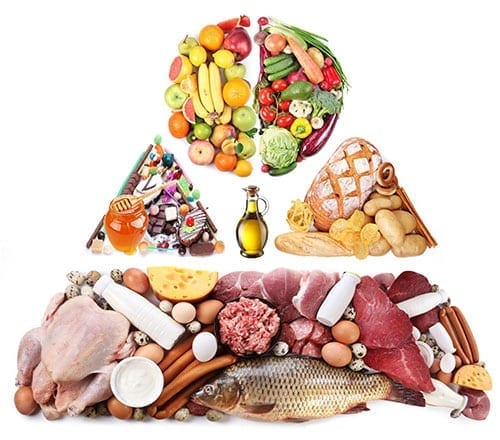The glycemic index (GI) is a system to help people with diabetes determine some of the right foods to eat. It calculates the effect of carbohydrates on the body and how long the food will supply sugar to the bloodstream. One goal for people with diabetes is to choose low-GI foods to help maintain healthy blood sugar levels. Not all patients are successful with choosing low glycemic foods so test it out to see how your blood sugar responds.
What is the Glycemic Index?
The glycemic index is a system that calculates the effect of different carbohydrates on the body. It tells how quickly and for how long food will supply energy (sugar) to the bloodstream. Foods with a high GI score supply energy very quickly and for a short time period. Usually, these foods should be avoided. Foods with a low GI score supply energy at a slower, steadier, and more prolonged rate. For people with diabetes, choosing low-GI foods may help keep blood glucose levels balanced and may prevent sharp spikes and dangerous crashes.
Meal planning is considered a cornerstone of diabetes self-management to keep blood sugar levels within a target range. The combination of following the glycemic index and counting carbohydrates may be a very effective plan for people with diabetes. All carbohydrates raise blood glucose levels. Some do so more and faster than others. The GI ranks foods from 0 to 100, based on how much it raises the blood sugar after the food is consumed. Factors that affect the GI of a food include the type of fiber it contains and how much starch it contains.
What is the Glycemic Load?
The glycemic load focuses on the GI of a food and the amount of carbohydrate in that portion of food. A glycemic load of 1 through 10 is considered low while 11 through 19 is medium and a load of 20 or more is high. The glycemic load may help predict the blood glucose level after meals. It may be more precise than just counting carbohydrates. Eating foods in combination may also influence blood sugar response compared to just calculating glycemic load.
The system sounds complex and it is. But many people with diabetes find it advantageous to determine the GI levels in foods and calculate their glycemic load. Lowering your glycemic load may help you gain better blood glucose control, reduce your risk of heart disease, and help you maintain a healthy body weight. An added benefit is many people experience is having more energy to help eliminate the fatigue often associated with diabetes. Each person will react differently.
Guesswork Does Not Work
You can’t always guess which foods will have high or low GIs. It is easy to predict that people with diabetes should avoid too many sugary foods. But did you know that foods like white bread and potatoes have an even higher GI than sugar or honey? Carbohydrates are ranked from 0 to 100 on the glycemic index, with 100 (the value of pure glucose) being a stable reference point. Here are a few examples of GI scores:
| Glucose Index Scores | |||
| Peanuts | 14 | White Rice | 64 |
| Pizza | 30 | Sugar | 68 |
| Carrots | 47 | Watermelon | 72 |
| Honey | 55 | Baked Potato | 85 |
| Oatmeal | 58 | Glucose | 100 |
Notice that pizza, a food that might be considered “bad” for you, is low on the GI scale. Why is that?
In reality, we rarely eat just one food at a time. We usually have complete meals that include fat, proteins, and carbohydrates, all of which are needed for optimal health. In general, fat, protein, and fiber will reduce the GI-rating of a food (such as pizza) because it takes the body longer to digest these more complex foods. Thus, the release of sugar into the bloodstream is delayed and prolonged.

Making the Switch
The glycemic index may help you eat healthier and control your diabetes more effectively. So how can you incorporate low-GI foods into your diet? It’s easy! Start by switching one item at a time. Put that white bread back on the shelf and grab a whole-grain or sourdough loaf instead. Eat fewer white potatoes and choose yams, sweet potatoes, red or purple potatoes. Eat whole grain pasta and long cooking oatmeal. Start adding more fruits and vegetables to your grocery list. Small changes can add up quickly.
A smaller number is what you want. If the glycemic index is .55 or less, it is usually low and a better choice. A GI number of .55-69 is medium, and .70 or higher is high. These foods are a poor choice. Packaged foods often contain the glycemic index so remember to check the labels. Harvard University has a GI list of more than 100 common foods for your quick reference. Whole foods that are closer to how they are naturally grown usually have a lower GI than processed and refined foods. It can be helpful to consult with a registered dietitian or diabetes nurse educator to learn more about making the most of the GI and determining your glycemic load. It is also important to monitor your blood sugar levels regularly to determine how different foods impact your blood sugar levels. Keep track of your findings to share with your health care team.
What Are Free Foods?
When people start counting carbohydrates, they often hear about “free” foods. These foods have 20 calories or less per serving with 5 grams or less of carbohydrate. Up to three servings can be eaten per day, or they are no longer “free.”
Non-starchy vegetables are typically considered free foods. This includes green beans, asparagus, cabbage, peppers, mushrooms, onions, celery, cucumber, okra, tomatoes, wax beans, zucchini, and Brussels sprouts. Other foods on the list include mustard, low-salt broth, spices, artificial sweeteners, sugar-free soft drinks, plain tea, black coffee, one tablespoon of ketchup, two tablespoons of nondairy creamer in powdered form, sugar-free gum, nonstick cooking spray, and two tablespoons of sugar-free syrup. Discuss these foods with your health care team to determine if they are suitable to include in your diabetes management plan.
Choosing the right foods to maintain healthy blood sugar levels can be a challenge for people with diabetes. The glycemic index may make it easier to determine the impact foods can have on your blood glucose levels. Determining your glycemic load may help you enjoy a happier, healthier life with more energy and few blood sugar fluctuations.












Leave A Comment